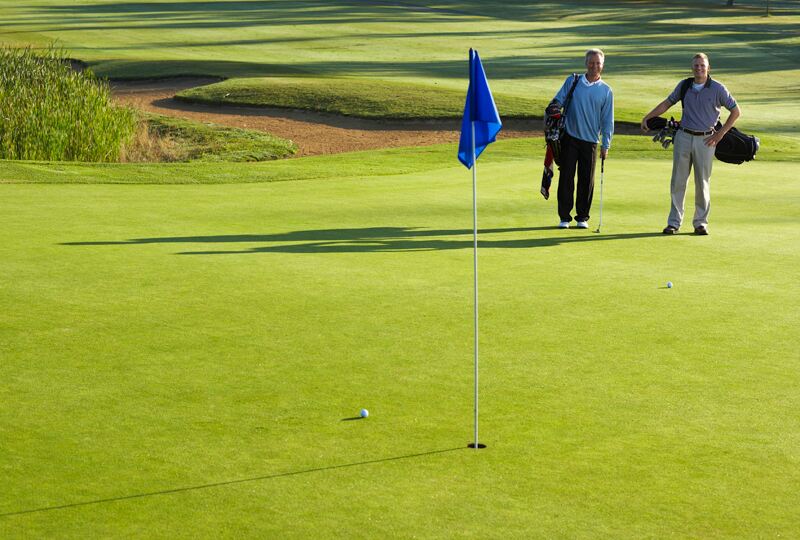Tips on how to read the green
One of the best ways to improve your putting is by being able to read the green. But how do you manage this seemingly mystical golfing task?
14 April 2016
2 minute read

Reading the run of a green is up there with horse whispering and Derren Brown tricks. A strange, mystical power that has been bestowed on only the most worthy golfers, while us mere mortals are left to simply hit and hope.
But the reality is a lot more straightforward. Like most things in golf it takes a bit of time, practice and patience to master. But once you know what to look for, it all becomes clear.
Start early
Don’t wait until you’re on the green to start reading it. As soon as you can see it, start analysing. As you approach, the sun might catch on the surface in different ways revealing hidden dips, dry patches and more.
It also means that if you’re playing an approach shot near the green, you can better place it. For example, if you’re more comfortable putting up a slope, aim for the lower part of the green.
Know what to look for
You’re not just looking for which way it slopes, you’ve got to notice every aspect of the green including:
- Dips: Greens can have small dips that could send your ball veering off course
- Dry/wet patches: These can affect the speed of the ball – dry patches speed it up, while wet areas will slow it down
- Length of grass: Environmental conditions can cause grass to grow at different rates or lay at an angle. Long grass could bring your putt to a halt, while grass lying to one side could alter the ball’s direction.
|

|
|
Get low
Once you’re on the green, you need to get low. As low as you can. This helps highlight the contours of the green.
It might even be worth bringing a spirit level or using you phone’s level to help create a starting point. Fairways aren’t necessarily level so you could be starting on a slope without knowing it.
Walk the green
Don’t just look at the green from behind your ball – walk the green to see it from all angles. This will bring up hidden slopes, ditches and dips.
Also, assume the worst – you’re going to over-hit the ball. This means you need to know more than just what happens between your ball and the hole – you need to know what comes after the hole. If there’s a big drop off, you might want to take a gentle putt. If it’s uphill, you can get away with a bit more power.
And don’t just rely on your eyes. While walking the green, pay attention to your feet. They’ll tell you about subtle changes in the gradient.
|

|
|
Take it one step at a time
Don’t just think about how you’re going to get your ball into the hole. Break up the putt – especially longer ones.
Firstly, plan the first 12 inches. You should be able to picture how the ball will roll towards the hole over the various slopes and undulations. Get this picture in your mind then find the spot on the green 12 inches from your ball. This is where you’re aiming for.
After that focus on the last 3 feet. If you’ve got a long putt, think of it like a long drive. You don’t go for the hole in one, you look to set up a good approach shot. Work back from the hole and find the straightest line to 3ft from it – this is where you’re aiming for.
There’s no use going for broke and seeing your ball disappear down a slope, when the other side of the hole is perfectly flat. Aim for the flat area.
|


